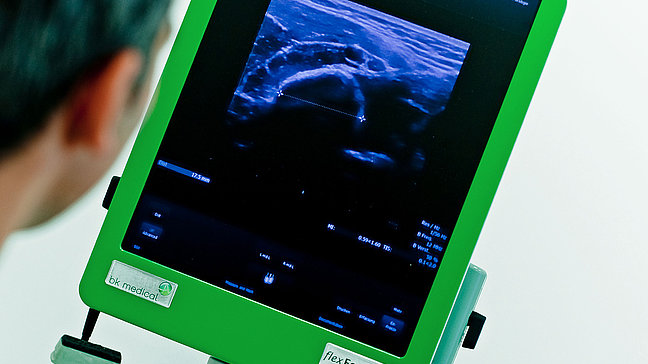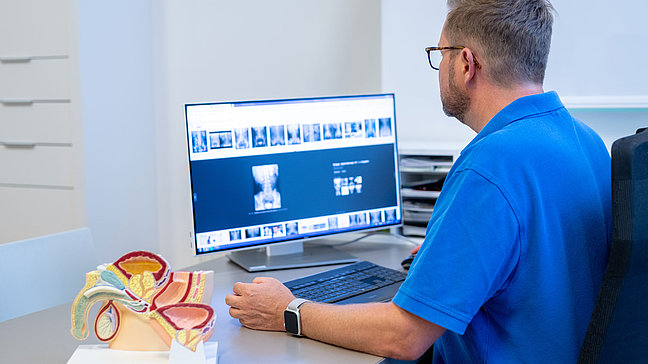
Undescended testicles
Causes of undescended testicles
The causes of undescended testicles are varied and can include genetic, hormonal and environmental factors. Hormonal disorders on the mother's or child's side, genetic anomalies and anatomical malformations along the descent path of the testicle can play a role. In many cases, the exact mechanism is not fully understood and a multifactorial etiology is assumed.
Symptoms of undescended testicles
- Missing or non-palpable testicles in the scrotum
- Asymmetrical appearance of the scrotum
- Discomfort or pain, especially in older children
Diagnosis of undescended testicles
Diagnosis is made by physical examination, often as part of routine ultrasound examinations of newborns. In addition, imaging techniques such as MRI or laparoscopy may be used to determine the exact location of the testicles. Hormone tests may also be necessary to check the functionality of the testicular tissue.
Treatment options for undescended testicles
Conservative: Hormone therapy with gonadotropin-releasing hormone (GnRH) or human chorionic gonadotropin (HCG) can be tried to promote testicular descent. However, this method is only successful in around 20% of cases and carries a risk of relapse of around 25%.
Surgical: Orchidopexy is the most common procedure in which the testicles are surgically moved into the scrotum. A laparoscopy may be necessary if the testicles cannot be palpated.
- Severity of the procedure: Surgical
- Duration of the procedure: Short, usually an inpatient stay
- Aftercare: Regular follow-up examinations to monitor the health of the testicles
- Probability of success: High, especially if the procedure is performed early.
Preventive measures for undescended testicles
There are no specific preventative measures. Early diagnosis and treatment are crucial to minimize the risk of complications such as infertility and testicular cancer. Regular check-ups with the pediatrician are important.
Frequently asked patient questions about undescended testicles
Yes, an untreated undescended testicle can impair sperm production and thus increase the risk of infertility.
Yes, the risk of later developing testicular cancer is increased in people with untreated undescended testicles.
Treatment includes hormonal therapies and surgery to move the testicle into the scrotum.
Ideally, treatment should be completed by the first year of life to avoid complications.
In some infants, the testicles may descend spontaneously into the scrotum in the first few months of life. After the first year of life, however, spontaneous descent is unlikely.
![[Translate to English:]](/fileadmin/_processed_/1/d/csm_UZ-Logo-2024-breit-aK-1500px-white-red_4b49b8d28c.png)


